Digital textual scholarship
Digital Textual Scholarship is focused on the study and creation of multilingual resources for Digital Humanities and the development and maintenance of applications for linguistic, stylistic, philological and semantic annotation of historical and literary documents. Researchers in this area aim to create, promote and integrate tools and resources for these purposes through the use of open standards and technologies.
The area includes the following sectors:
- Digital Tools, Methods and Resources for Textual Scholarship
- Digital Epigraphy, Papyrology, Manuscript & Book Studies
- Digital Scholarly Editing
- Digital Text Analysis and Comparative Studies
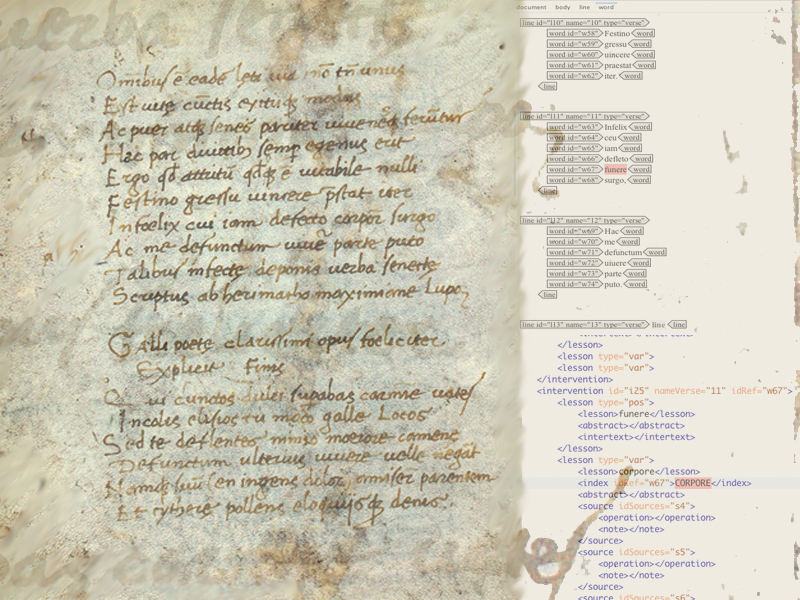
Fellowship projects
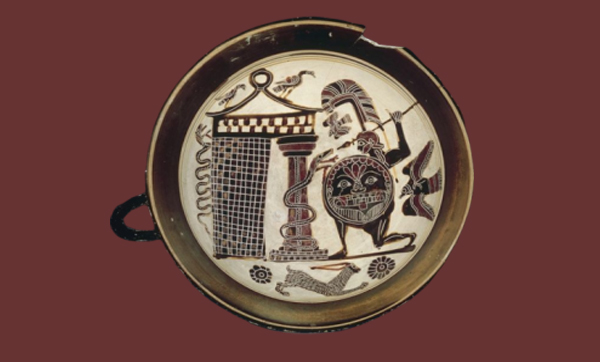
Cadmus: a general-purpose and modular content editing alternative
Carried out by Daniele Fusi
The project aims to design a multipurpose platform devoted to the digital modeling and creation of philological resources. As a first application, Cadmus will be soon the shared platform for a pilot collaborative project in Latin literature (see Wiki-MQDQ).
For more info regarding the project: YouTube video recording of seminar, GitHub repo
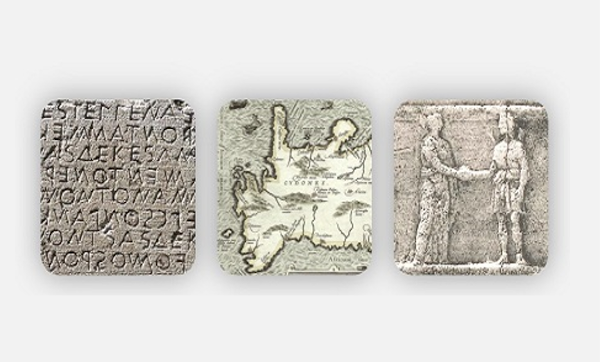
Cretan Institutional Inscriptions
Carried out by Irene Vagionakis
Supervisors: Claudia Antonetti and Gabriel Bodard
Website: http://cretaninscriptions.vedph.it
For more info regarding the project: Introduction to the Cretan Institutional Inscriptions
An Open Access collection of Greek inscriptions pertaining to the Cretan institutions of the period between the rise of the poleis and the Roman conquest of the island (VII-I cent. BC). It has been created as part of the PhD research project in Ancient Heritage Studies carried out at the University of Venice Ca’ Foscari by Irene Vagionakis under the supervision of Claudia Antonetti and Gabriel Bodard. It has been published by the Venice Centre for Digital and Public Humanities (VeDPH) and is hosted at the Institute for Computational Linguistics 'A. Zampolli' of the National Research Council (ILC-CNR for CLARIN-IT). For more: https://www.clarin-it.it/cretaninscriptions
Visiting scholars' projects
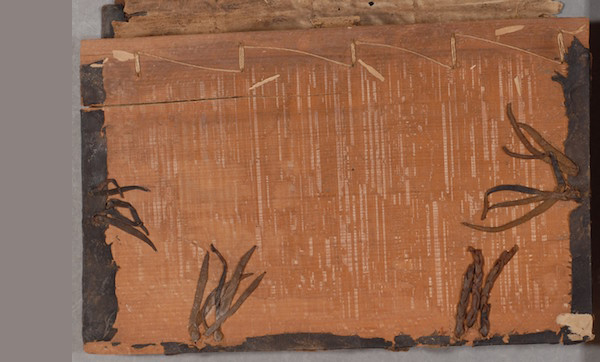
Decoding the history of the book with Linked Open Data
Carried out by Alberto Campagnolo
In collaboration with the Marciana National Library, he works on a plan to describe the detached binding collection. Bookbinding structures provide contextual information about books and their provenance, information that is rarely included in catalogues. Within the remits of the novel Digital Codicology movement, the project aims at describing a selection of the Marciana’s detached bindings and to publish the data utilizing Linked Open Data (LOD) standards (CIDOC- CRM; Language of Bindings Thesaurus) constituting a first real attempt at publishing an LOD dataset on bookbindings. Alberto is also the co-PI (with Dot Porter, SIMS, University of Pennsylvania) of Viscoll a project to model and visualize the gathering structure of books in codex format.
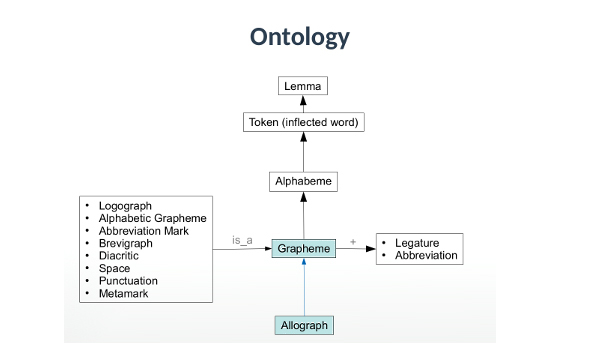
An ontology for digital graphematics and philology: interoperability, object-oriented programming and Linked Open Data
Carried out by Paolo Monella
He is working on the creation of an ontology for graphematics and textual philology, exploring concepts such as grapheme, allograph, ligature, abbreviation with a focus on European medieval handwriting and early modern print. The overarching goal is to let digital philologists, their software and their editions speak the same language and talk to each other, and to build that language on the foundation of linguistics, semiotics and graphematics. For more info regarding the project: YouTube video recording of seminar
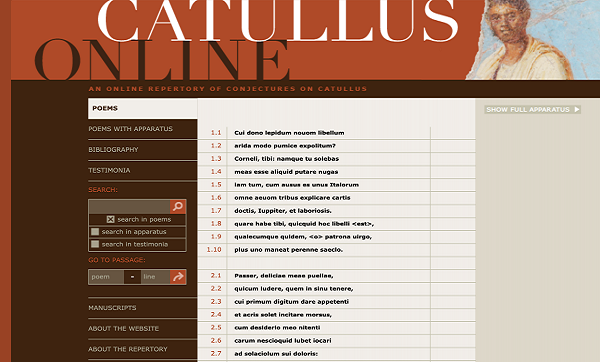
Encoding Classical Latin: Catullus Online, Musisque Deoque, and Beyond
Carried out by Dániel Kiss
Also affiliated with the University of Barcelona and Eötvös Loránd University, Dániel is working on an upgrade to two important digital philological publications in the field of classical Latin: Catullus Online, a digital critical edition of the poems of Catullus created by Dániel in 2009-13; and Musisque Deoque, a digital corpus of Latin poetry created since 2007 by a consortium of researchers led by Paolo Mastandrea at Ca’ Foscari University of Venice. The main objective of his project is to upgrade the philological contents of these publications; he has been also collaborating with Daniele Fusi in an upgrade of the digital infrastructure behind Musisque Deoque and in preparing a new structure for Catullus Online. On a longer horizon, Dániel is exploring the possiblity of creating larger, more complete and philologically more complex digital corpora of classical Latin texts than those that exist today.
Member / Department of Humanities projects
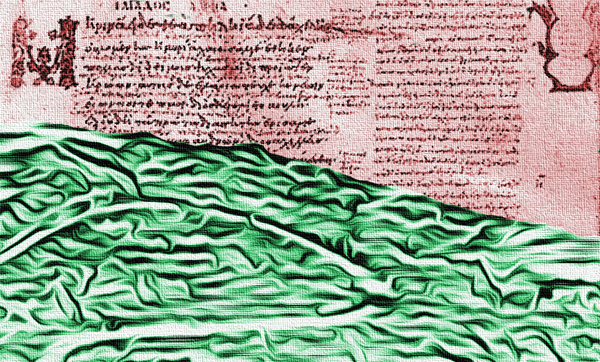
ARCHIPELAGO DH
Principal investigator: Federico Boschetti
Website: cophilab
Status: ongoing
The Archipelago DH project is focused on the creation of new multilingual resources for Digital Humanities (especially acquired through advanced techniques of OCR) and the development of applications for linguistic, stylistic, philological annotation of historical and literary documents.
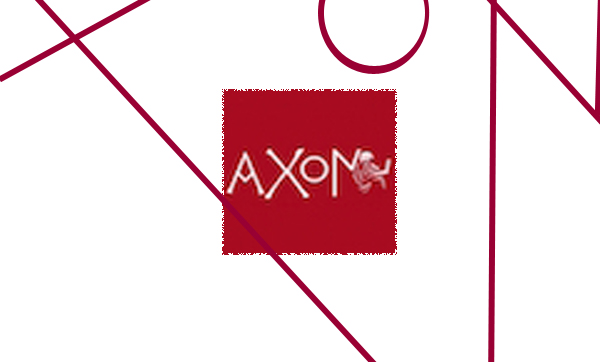
AXON. Italian Database of Greek Historical Inscriptions
Principal investigator: Stefania De Vido
Website: database [ITA], journal [ITA]
Status: ongoing
The AXON Project has developed a database of Greek historical inscriptions, from the birth of the polis in the Archaic Age to 31 BC. Each entry is provided with the object’s description, a complete lemma, Greek text with critical apparatus, translation and commentary with keywords and indexes, and updated bibliography. New insights for data-inclusion have been developed. The database supports enlargement and offers a high degree of searchability; it offers some new strategies for research and teaching.
The Laboratory of Greek Epigraphy presents its research projects (AXON, CRINS, Venice Squeeze Project) and offers some tutorials to use the key online resources for Greek Epigraphy. The videos, produced in collaboration with the VeDPH, are available now at Members’ project: Greek Epigraphy - YouTube
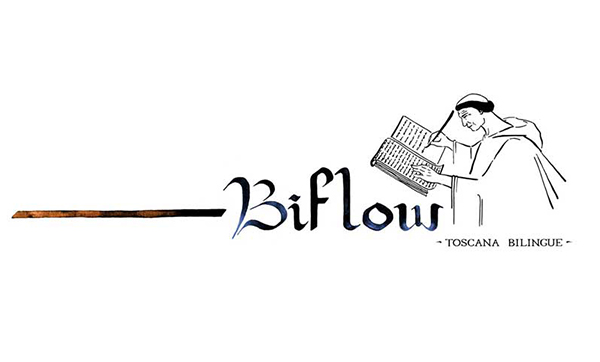
The Biflow catalogue
Principal investigator: Antonio Montefusco (DH research fellow: Tiziana Mancinelli)
Website: https://catalogobiflow.vedph.it/
Status: ongoing
Biflow Catalogue - Toscana Bilingue (1260-1430) is the final outcome of the ERC StGrant 675333 project BIFLOW (Bilingualism in Florentine and Tuscan Works). It aims to provide a digital scholar tool for the analysis of socio-cultural history through mods and forms of translations in Tuscany during the Middle Age. The catalogue offers an unprecedented and systematic investigation of non-classical texts (written after the 13th Ccntury) translated in Tuscany between the 13th century and the beginning of the 15th century. Additionally, it proposes an ontology of a specific domain as a new insight to represent data within a catalogue conceived for the study of multilingualism and translation in the Middle Ages. The Biflow ontology models the scholarly approach taken by the researchers investigating the corpus of bilingual texts through their dossiers.
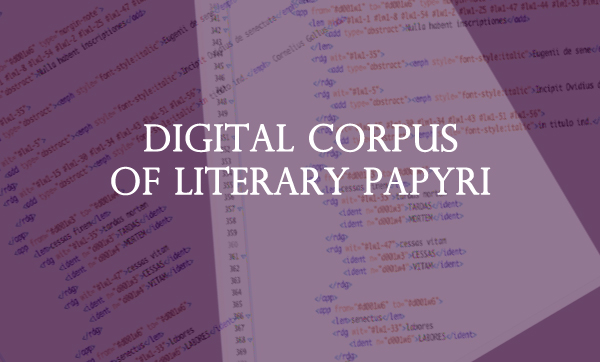
Digital Corpus of Literary Papyri
Co-Principal investigator: Holger Essler in collaboration with R. Ast and J. Cowey (University of Heidelberg)
Website: papyri.info
Status: ongoing
Digital Corpus of Literary Papyri (on papyri.info) project is working on building a comprehensive online corpus of all Greek literary papyri. The first stage involved transferring the texts found in the Villa dei Papiri at Herculaneum (epikur-wuerzburg.de/thv), the second focuses on paraliterary texts (epikur-wuerzburg.de/ekdosis). Since the conventions of papyrological editions allow for much detail on the physical aspects of the text bearing object, transcriptions from the comprehensive databases of papyrus texts may easily be used as ground truth for training HTR.
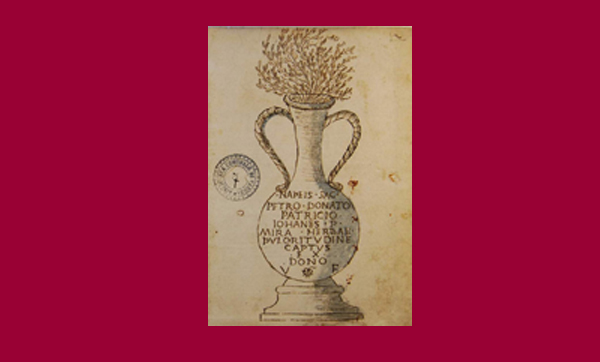
Epigraphic Database Falsae (EDF)
Principal investigator: Lorenzo Calvelli
Website: edf.unive.it [ITA]
Status: ongoing
EDF - Epigraphic Database Falsae is an open-access digital resource, offering an unprecedented systematic survey of epigraphic forgeries produced across Italy from the Middle Ages to present. It compiles both textual and visual data from multiple sources and concerns all known typologies of fakes, including intentional forgeries, replicas of ancient inscribed monuments, as well as medieval and early modern inscriptions imitating classical models. All these products have intentionally been labeled as falsae, keeping the same broad and comprehensive definition, which appears in the Corpus inscriptionum Latinarum [DEU].
EDF is the main output of «Forged evidence» (False testimonianze), a research project investigating on forged ancient inscriptions, sponsored by the Italian Ministry of Education. The project is coordinated by Lorenzo Calvelli and involves over 50 scholars, stemming from a network of 12 Italian Universities. We are in the process of building further partnerships with other national and international projects and scholars.
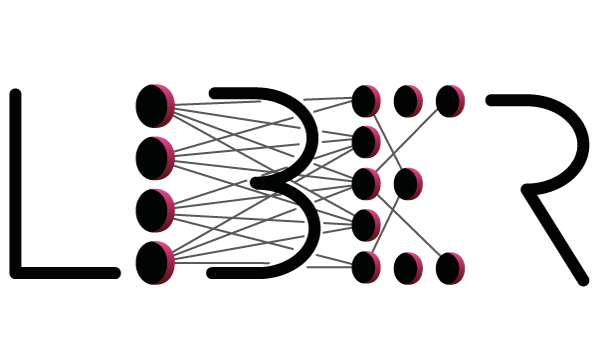
The King’s Librarians at Work. Applying Machine Learning and Computer vision to the study of scribal marks on cuneiform tablets
Principal investigator: Paola Corò
Website: www.unive.it/liber
Status: ongoing
"I have read cunningly texts in obscure Sumerian and Akkadian that are difficult to interpret. I have carefully examined inscriptions on stone from before the Deluge that are sealed, stopped up (and) confused”. Such is the claim to scribal competence of Ashurbanipal, the 8th century BC Assyrian king. Among the clay tablets that formed his famous ‘Royal Library’ a substantial number of literary and scholarly texts include holes of different sizes and shapes whose function is still unclear. Applying Machine Learning and Computer Vision to the study of these holes the project aims at verifying if and to what extent these devices represented scribal or librarian marks. In addition, the systematic exploration of the connection of the holes with the shape and content of the tablets will help elucidating the procedures underpinning the Library’s formation, its ordinary management by the king’s librarians and how worked the scribes in order to produce the manuscripts which entered it. The project is funded through a SPIN2 measure of Ca' Foscari University Venice and is carried out in collaboration with the Center for Culture Heritage Technology of the Italian Institute of Technology and the Dept. of the Middle East of the British Museum, to which the cuneiform collections under scrutiny belong.
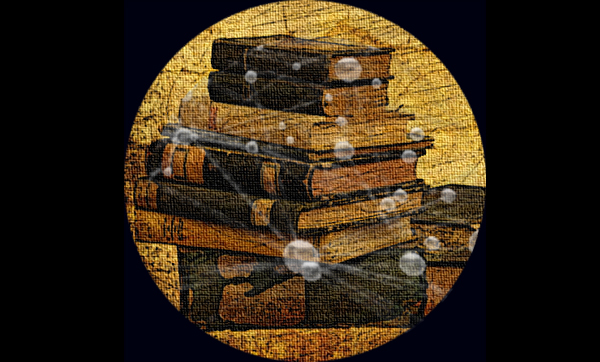
Marginalia Semantica
Principal investigator: Paolo Mastandrea
Status: about to start
Marginalia Semantica aims at extending the Memorata Poetis Project with new semantic annotations and new search strategies for Greek, Latin, Italian and English texts. The Greek section is mainly based on C.O. Pavese’s studies on the Homeric Hymns and the Choral Lyric, whereas the Latin, Italian and English sections are mainly based on the textual corpus originary created for Memorata Poetis. New annotations and a subset of the earlier ones are organized within an ontology, in order to improve the semantic search engine.
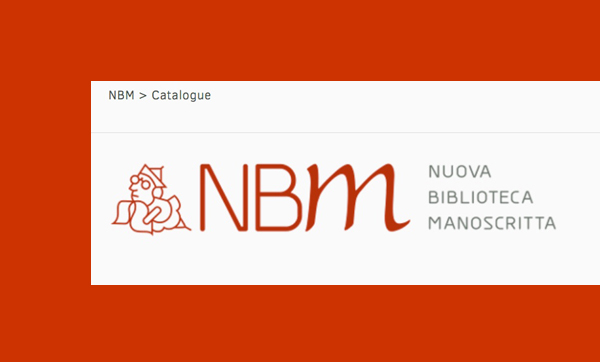
Nuova Biblioteca Manoscritta
Principal investigator: Paolo Eleuteri
Website: www.nuovabibliotecamanoscritta.it [ITA]
Status: ongoing
The Nuova Biblioteca Manoscritta (NBM) is since 2005 the online catalogue of the manuscripts held in the libraries of the Veneto, approximately 100,000 items. NBM is an internet-based platform. Cataloguers use common authority files for names, titles, subjects and bibliographical information. It is possible to add images to every part of a descriptive record as well as to import a complete digitized manuscript. NBM is managed totally via internet, from first data input to revisions and final publication. The database is queried via the OPAC on the website www.nuovabibliotecamanoscritta.it [ITA]. The project includes more than 52,000 descriptions of manuscripts from about 40 libraries. NBM is promoted and funded by the Regione del Veneto, together with the Ca' Foscari University of Venice, Department of Humanities.
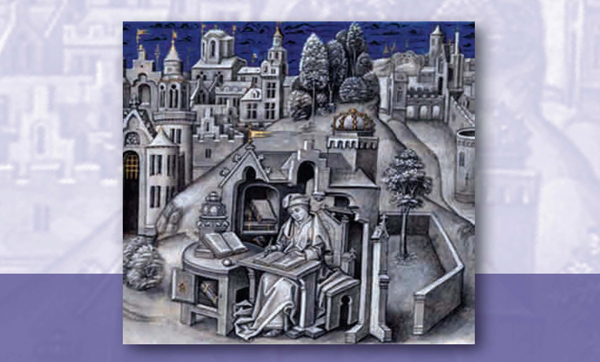
Pede Certo
Principal investigator: Luca Mondin
Website: www.pedecerto.eu [ITA]
Status: ongoing
PedeCerto is an open-access tool devoted to metrical researches on ancient Latin poetry, connected to the Musisque Deoque project [ITA].
It consists of:
- a program for the automatic scanning of Latin verses in dactylic meter (hexameters and pentameters),
- a text archive containing the corpus of the Latin dactylic poetry that has been analyzed, and the data produced by the metric analysis,
- a set of tools for querying the archive. PedeCerto users can currently investigate the metrical features of all the ancient Latin texts in regular dactylic verses, from Ennius to Eugenius of Toledo (200 BC-650 AD), for an amount of 244.008 lines.
In 2020 the program will undergo a substantial technical update.
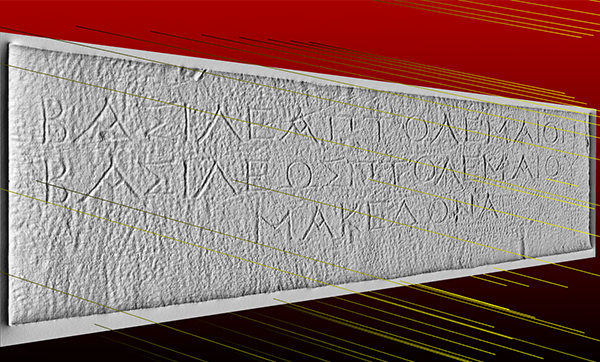
Venice Squeeze Project (VSP)
Principal investigator: Claudia Antonetti
Website: mizar.unive.it/venicesqueeze/public/frontend [ITA], www.e-stampages.eu/s/e-stampages/page/accueil [FRA]
Status: ongoing
The Venice Squeeze Project aims to digitize the collection of epigraphic squeezes of Greek inscriptions hosted in the Laboratory of Greek Epigraphy of Ca’ Foscari University of Venice. It mirrors the interest in the epigraphic squeezes that has recently arisen in the scientific community, and it aims to enhance this kind of documents.
Ca’ Foscari collection is going to be published in the digital database E-STAMPAGES [FRA]. This resource, that is open-access and interoperable, has been developed by the École française d’Athènes [FRA] and the Laboratory HiSoMA [FRA] (Histoire et Sources des Mondes Antiques) of Lyon. It publishes most part of the squeezes of these institutions, as well as Ca’ Foscari collection. Each squeeze is published with a full set of structured metadata, two black-and-white photos of the obverse and the reverse, and a 3D reconstruction, produced by the software developed in the framework of the Digital Epigraphy and Archaeology Project of the University of Florida.
The Venice Squeeze Project is also developing a web-based software to catalogue epigraphic squeezes. It will allow scholars to produce their own digital archive of epigraphic squeezes according to the model of E-STAMPAGES and Venice Squeeze Project. This initiative provides scholars with a user-friendly tool that makes epigraphic squeezes easily accessible.
The Laboratory of Greek Epigraphy presents its research projects (AXON, CRINS, Venice Squeeze Project) and offers some tutorials to use the key online resources for Greek Epigraphy. The videos, produced in collaboration with the VeDPH, are available now at Members’ project: Greek Epigraphy - YouTube
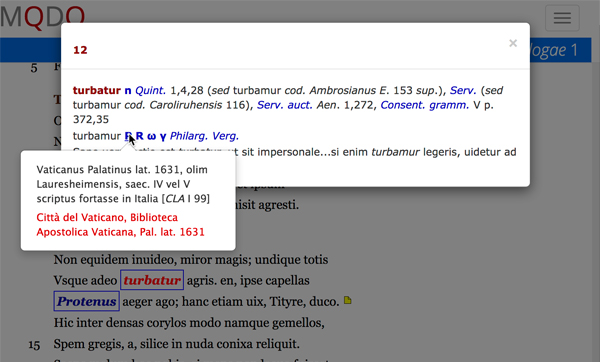
Wiki-MQDQ. A new web-based editing tool for MQDQ Latin poetry Database
Principal investigator: Martina Venuti
Website: www.mqdq.it [ITA]
Status: ongoing
The project aims at increasing and improving MQDQ database, which is a well-known open access scientific tool for searching Latin poetry with critical apparatus, used every day by scholars, students, common readers. The idea is to create a new web-based platform that allows collaborators to work directly on MQDQ texts, add apparatuses, provide additional information or links to external resources. The WiKi- MQDQ will be easy to use in order to offer the opportunity for powerful information sharing and ease of collaboration.

Cretan Institutional Inscriptions
Principal investigator: Claudia Antonetti and Gabriel Bodard
Website: http://cretaninscriptions.vedph.it
An Open Access collection of Greek inscriptions pertaining to the Cretan institutions of the period between the rise of the poleis and the Roman conquest of the island (VII-I cent. BC). It has been created as part of the PhD research project in Ancient Heritage Studies carried out at the University of Venice Ca’ Foscari by Irene Vagionakis under the supervision of Claudia Antonetti and Gabriel Bodard. It has been published by the Venice Centre for Digital and Public Humanities (VeDPH) and is hosted at the Institute for Computational Linguistics 'A. Zampolli' of the National Research Council (ILC-CNR for CLARIN-IT). For more: https://www.clarin-it.it/cretaninscriptions
